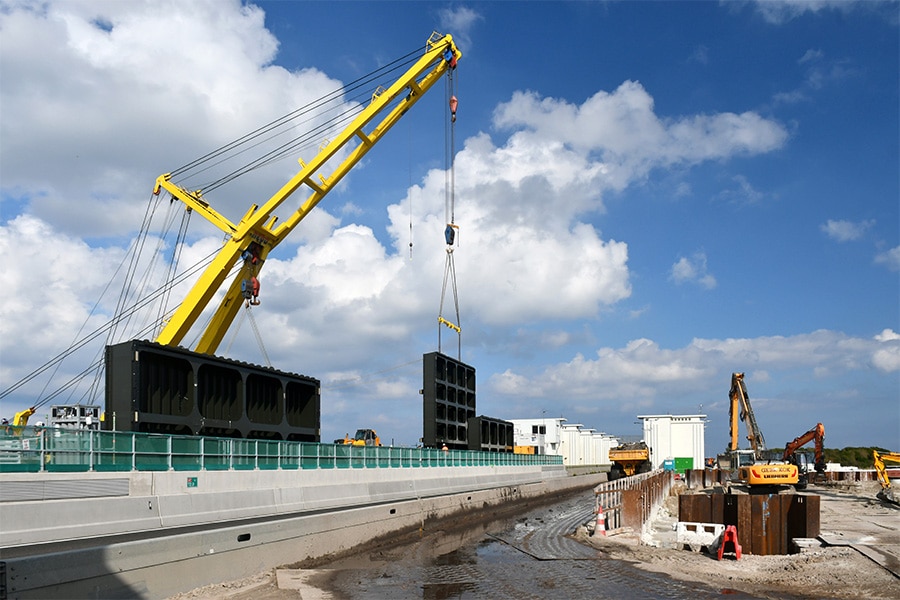
Two-stage procurement
Rijkswaterstaat's variants
Large infrastructure works tendered out through a UAV-GC contract are now almost infamous. More often than not, they attract publicity. Think of Zuidasdok in Amsterdam, the A15 Maasvlakte-Vaanplein and the IJmuiden sea lock. Mckinsey wrote a critical report on these that led to the report 'Future Task Rijkswaterstaat: Perspective on the challenges and opportunities for improvement in the GWW' of Rijkswaterstaat. To turn the tide, Rijkswaterstaat announced a transition through four measures. One of the measures announced is the so-called "two-phase process.
Two-stage process
An important feature of such a two-stage process is that parties only agree on prices for risky components at a time when those risks are easier to assess. This ties in with the widely shared analysis that many problems are caused by having to determine the price at a time (during the tendering process) when much is still uncertain or unclear. Professor of construction law at TU Delft Prof. M.A.B. Chao-Duivis called this the biggest pain point of integrated contracts during her farewell speech. Meanwhile, Rijkswaterstaat has also published a Plan of Action: 'Towards a vital infrastructure sector: plan of approach, impetus for joint transition process'. Subsequently, Rijkswaterstaat also started experimenting with such a two-phase process on various projects.

Variants of the two-phase process
Rijkswaterstaat's experiments have resulted in several variants. One variant is that in which the two-stage process is carried out during the tender. This goes as follows: the tender leads to the choice of one party, while the price is not yet fixed and no final award is made. This party then goes through the design phase (phase 1). This takes place during the tender process. After that, this party is then the only one allowed to submit a tender. If the parties agree on this, the contract is then definitively awarded (phase 2, the execution phase).
Another variant is that which involves a full multi-party bidding process. A final award is made to the winner without a fixed price being established. An agreement is made with the winner for phase 1 and phase 2. In phase 1 the design is worked out and then the price formation takes place on a one-to-one basis between client and contractor. Upon agreement, it comes to execution (phase 2). If the parties do not reach an agreement on the price, they can separate. This is then also called the exit model. This variant was applied, for example, in the renovation of the Maas Tunnel in Rotterdam.
Thus, there is also an entry model. This is very similar to the exit model, except that after tendering an agreement is made only for phase 1 (the design). If the parties then agree on the price, an agreement is reached for phase 2 (the execution) . This model has been applied in several dike reinforcement projects, for example.
Findings
Involving the contractor during the design process offers advantages by allowing him to use his implementation expertise in making design choices. Involvement in the design with the prospect of a contract for the execution phase also promotes cooperation between parties. This is evidenced, for example, by the experience of construction team agreements. Finally, phased pricing prevents a price from being arrived at while much is not yet clear. After all, the latter has proven to be and recipe for accidents.
A challenge is whether this new approach fits within the framework of procurement law. Whatever the case, there seems to be much to gain for both client and contractor with this two-stage process. It is an illusion to think that this will make problems in large infrastructure projects a thing of the past, but it is certainly a step in the right direction.
R.J. Kwaak, attorney at Construct Lawyers



